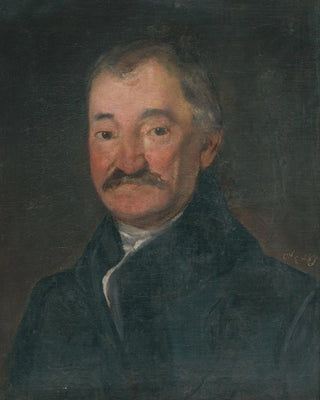Art print | Portrait of an elderly man - Friedrich von Amerling Source: Reproduction | Portrait d'un homme âgé - Friedrich von Amerling


View from behind

Frame (optional)
The "Portrait of an Elderly Man" by Friedrich von Amerling is a piece that transcends the simple frame of painting to become a true testament to humanity. Capturing the nuances of a life marked by experience, this art print evokes an emotional depth that invites the viewer to reflect on existence itself. The penetrating gaze of the subject, combined with the delicacy of the details, creates an intimate atmosphere where each brushstroke seems to whisper forgotten stories. Immersing oneself in this work, one cannot help but feel a connection to the past, an invitation to explore the thoughts and memories of a man whose wisdom is etched on his face.
Style and uniqueness of the work
The style of Friedrich von Amerling is distinguished by its striking realism and meticulous attention to detail. In "Art print of an elderly man," every element, from the fold of the clothing to the expression on the face, is treated with precision that demonstrates undeniable technical mastery. The color palette, subtly chosen, gives the piece a warm and soothing ambiance, while light plays a key role in highlighting the features of the subject. This play of shadow and light, typical of Amerling's style, enhances the three-dimensionality of the portrait, making the character almost alive. This realism, combined with rare artistic sensitivity, allows the work to transcend time, offering a timeless vision of human dignity.
The artist and his influence
Friedrich von Amerling, an emblematic figure of the 19th century, managed to mark his era with his innovative approach to portraiture. Trained at the Vienna Academy of Fine Arts, he was influenced by the great masters of painting, while developing a style that is uniquely his own. Amerling captured the spirit of his time, blending tradition and modernity. His work is not limited to a simple representation but is part of a broader reflection on identity and the human condition. By painting portraits, he also contributed to establishing a new standard for art prints of portraiture, where the psychology of the subject is emphasized. His influence endures

Matte finish

View from behind

Frame (optional)
The "Portrait of an Elderly Man" by Friedrich von Amerling is a piece that transcends the simple frame of painting to become a true testament to humanity. Capturing the nuances of a life marked by experience, this art print evokes an emotional depth that invites the viewer to reflect on existence itself. The penetrating gaze of the subject, combined with the delicacy of the details, creates an intimate atmosphere where each brushstroke seems to whisper forgotten stories. Immersing oneself in this work, one cannot help but feel a connection to the past, an invitation to explore the thoughts and memories of a man whose wisdom is etched on his face.
Style and uniqueness of the work
The style of Friedrich von Amerling is distinguished by its striking realism and meticulous attention to detail. In "Art print of an elderly man," every element, from the fold of the clothing to the expression on the face, is treated with precision that demonstrates undeniable technical mastery. The color palette, subtly chosen, gives the piece a warm and soothing ambiance, while light plays a key role in highlighting the features of the subject. This play of shadow and light, typical of Amerling's style, enhances the three-dimensionality of the portrait, making the character almost alive. This realism, combined with rare artistic sensitivity, allows the work to transcend time, offering a timeless vision of human dignity.
The artist and his influence
Friedrich von Amerling, an emblematic figure of the 19th century, managed to mark his era with his innovative approach to portraiture. Trained at the Vienna Academy of Fine Arts, he was influenced by the great masters of painting, while developing a style that is uniquely his own. Amerling captured the spirit of his time, blending tradition and modernity. His work is not limited to a simple representation but is part of a broader reflection on identity and the human condition. By painting portraits, he also contributed to establishing a new standard for art prints of portraiture, where the psychology of the subject is emphasized. His influence endures






